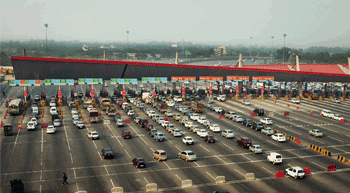Driven by strong growth in medium and heavy commercial vehicle (M&HCV) along with an increase in the wholesale price index (WPI), toll collections are likely to witness significant growth in FY2020.
As per an ICRA note, automotive sales are one of the leading indicators for the likely movement of traffic. Typically, commercial vehicles account for around 65-70 per cent of the total vehicular movement on a majority of the National Highway stretches while passenger vehicles accounting for the remaining 30-35 per cent. High growth in automotive sales would lead to growth in traffic volumes subsequently.
Says Rajeshwar Burla, Assistant Vice-President & Associate Head, Corporate Ratings, ICRA, “The latest commercial vehicle (CV) sales trend is encouraging with the M&HCV cargo segment witnessing robust growth of 38 per cent during 8M FY2019. Further, the average increase in WPI (toll rates are linked to WPI) for FY2019 is expected to be around 4 per cent (higher than FY2018 by 120 bps). The combination of high M&HCV sales and the increase in WPI would result in toll collections witnessing double-digit growth in FY2020.”
ICRA, in its latest study on the performance of toll road projects, has analysed 48 toll road projects with a median operational track record of six years. Based on the study, it has been observed that due to prolonged slow-down in the economy, traffic volumes had started decelerating in FY2013.
The implied median traffic growth (adjusting the revenues for toll rate hikes) has witnessed a de-growth of 2.5% in FY2014. Most of these projects are important arterial routes and were affected in FY2014 due to a slowdown in manufacturing and mining activity, following the ban on mining of several ores.
Freight movement has a strong correlation with the GDP and consequently, the toll collections exhibit a good correlation with movement in GDP. About 60-65% of the freight traffic is dependent on mining, manufacturing and construction sectors. Therefore, any contraction in these three sectors has a material adverse impact on commercial traffic, thereby affecting toll collections.
With the removal of the ban on iron-ore mining and pick-up in manufacturing activity, the median traffic growth improved to 5.4 per cent in FY2015 and thereafter to 7.2 per cent in FY2016 (mining and manufacturing activities peaked in FY2016). However, the slowdown in the economic activity post demonetisation period, adversely affected the traffic during FY2017, resulting in subdued growth of traffic in FY2017 at 4 per cent.
The after-effects of demonetisation, along with the GST implementation led to a weak first half in FY2018 and limited the growth to 4.8 per cent. The implied traffic growth in H1 FY2019 remained moderate at 3.1 per cent. Toll collections are, therefore expected to witness high single-digit growth in FY2019, followed by slightly double-digit growth in FY2020.



Leave a Reply
You must be logged in to post a comment.